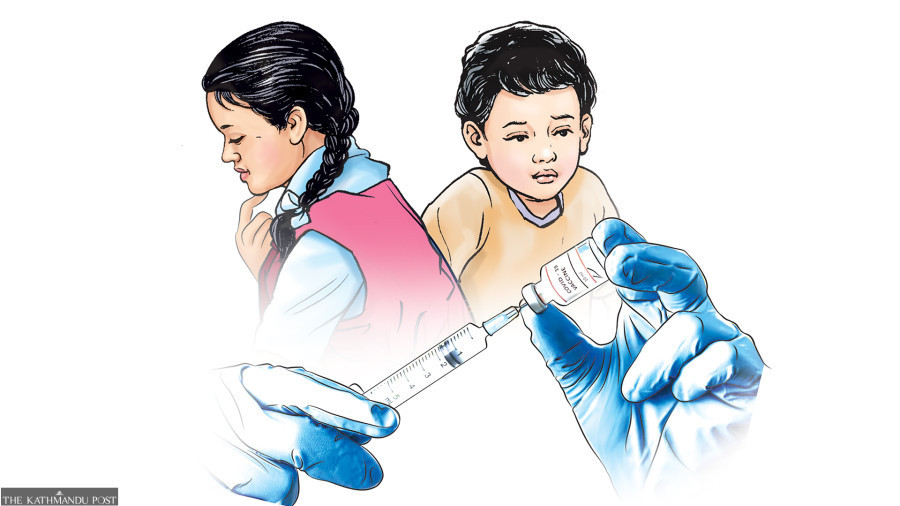Editorial
Crush it again
A decade since Nepal was declared polio-free, the potentially debilitating virus is back. It must be nipped in the bud.
Nepal, a country that was long in the clutches of poliovirus, made a significant stride when in 2014 the United Nations declared it “polio-free”. However, the recent detection of type-3 vaccine-derived poliovirus (VDPV)—active viruses in the oral polio vaccine—in Kathmandu’s sewage samples collected from the confluence of the Tukucha and Bagmati Rivers indicates a potential outbreak. Although no one has been infected, the presence of the virus in sewage is in itself concerning. This calls for a prompt response from the authorities, as it could put Nepal’s achievements on polio at risk.
According to the World Health Organisation, polio or poliomyelitis mainly affects children under five (but anyone unvaccinated is at risk). It is a water-borne disease and is transmitted through unhygienic habits, droplets or aerosols, faecal contamination, infected utensils, food and water. Infection from the virus has declined (by 99 percent) worldwide since 1988, but the WHO warns that “as long as a single child remains infected, children in all countries are at risk”. South Asian countries Pakistan and Afghanistan have also reported wild polio in wastewater in recent months. This means the risk of contagion in Nepal is far from over, and we can no longer be complacent.
The emergence of VDPVs, as per the WHO and studies, is associated with low immunisation coverage. Vaccination is thus crucial to contain the spread of polio. Nepal has undertaken many vaccine campaigns against it. Still, as per the Nepal Demographic and Health Survey-2022, at least 4 percent of children aged 12-23 months have not been jabbed against any disease. The vaccine coverage rate for polio, according to the Health Ministry, is 95 throughout the country. So, the virus could strike under-vaccinated and unvaccinated children at any time.
For successful eradication of the poliovirus back in 2014, the country’s efforts included routine vaccine campaigns, door-to-door calls, additional national and subnational mass vaccination campaigns, surveillance of acute flaccid paralysis, mop-up campaigns, and the introduction of injected vaccines in addition to oral vaccines. It’s time the government and healthcare authorities dusted off their old knowledge and kits. However, studies show that vaccines alone don’t help. A recent article, “Polio in Gaza: What Does This Mean For the Region and the World?” in The Conversation highlights how maintaining sanitation and hygiene can help eradicate polio.
Health authorities and donor agencies have arranged special vaccination drives in Lalitpur, Kathmandu and Bhaktapur and are launching the campaign from today, and it will continue till July 27. They must ensure that not a single child is deprived or missed and also focus on virus surveillance in other districts and start jabbing children wherever necessary. Despite this initiative, a recent Post report highlights a significant disparity in the country’s approach to sample collection: They are taken from five tributary rivers in the Kathmandu Valley, Koshi, Madhesh and Gandaki provinces; other provinces are excluded. This isn’t comprehensive enough as poliovirus could be detected anywhere, given the constant flow of people, in and out of the country.
The situation demands that the government develop country-wide monitoring, vaccination campaigns and sanitation programmes without further ado. If these measures are not prioritised, it could be a matter of time before we have another polio wave on our hands.




 7.15°C Kathmandu
7.15°C Kathmandu












%20(1).jpg&w=300&height=200)

